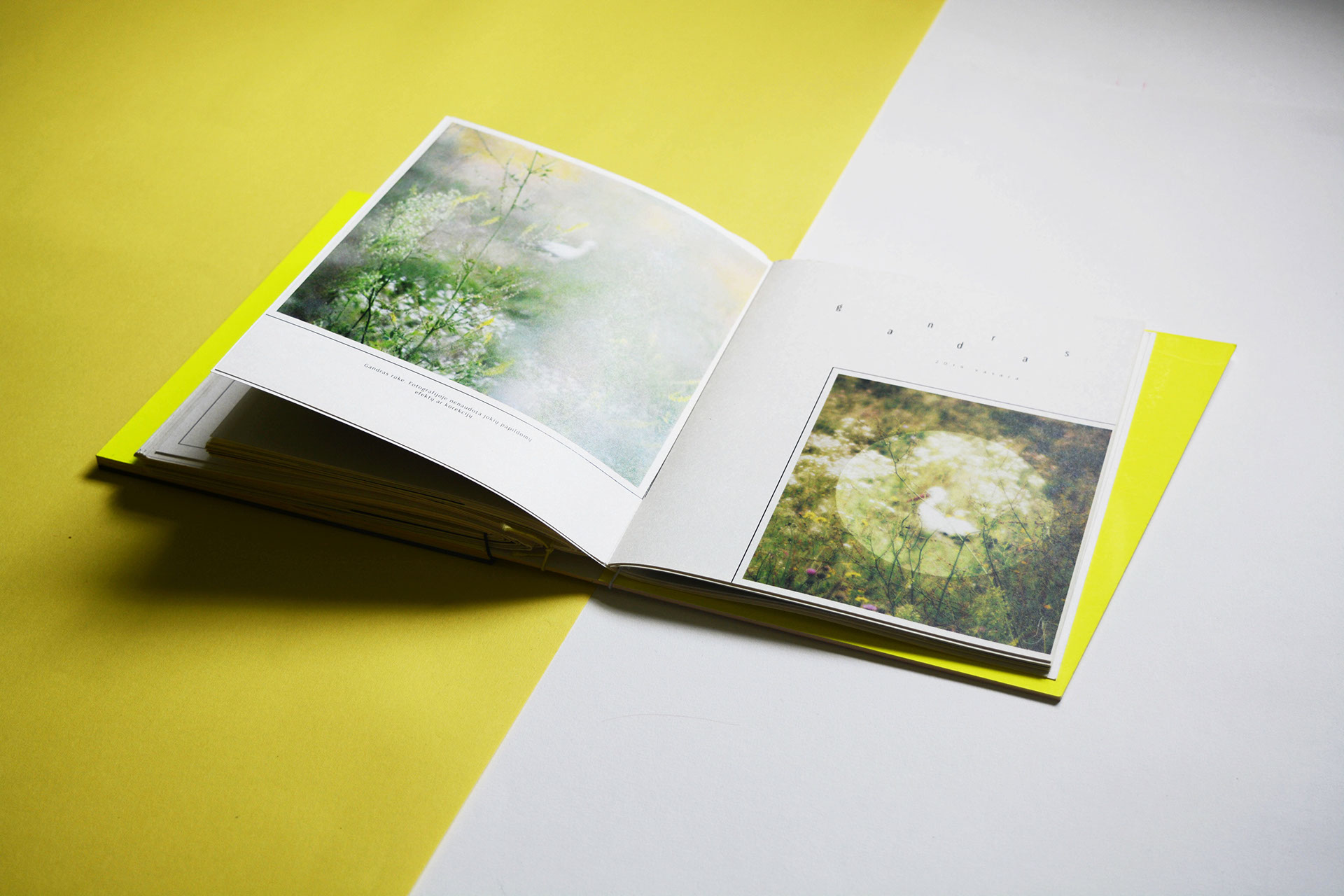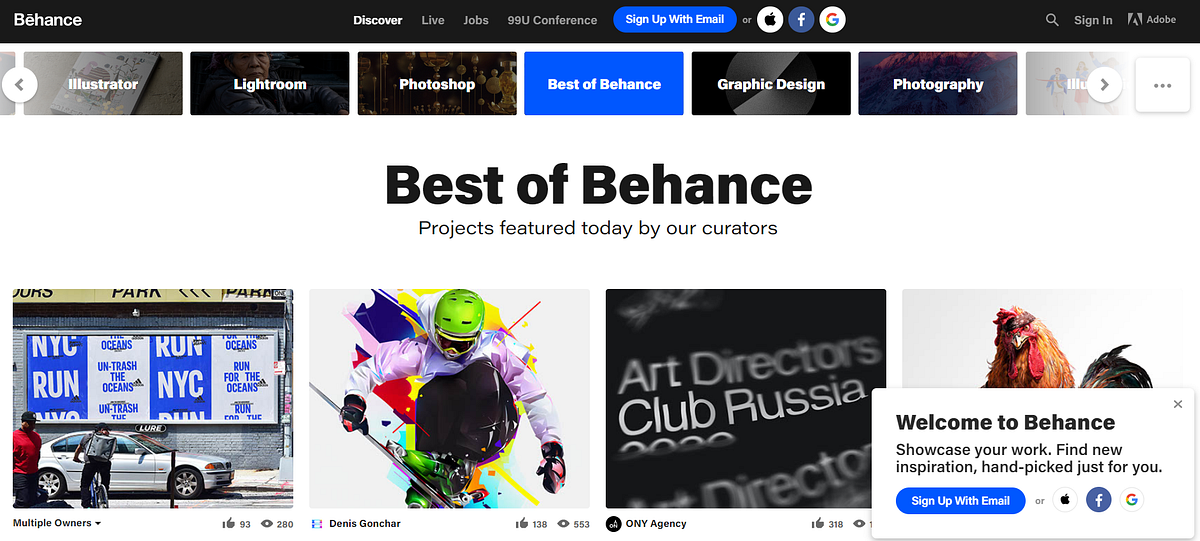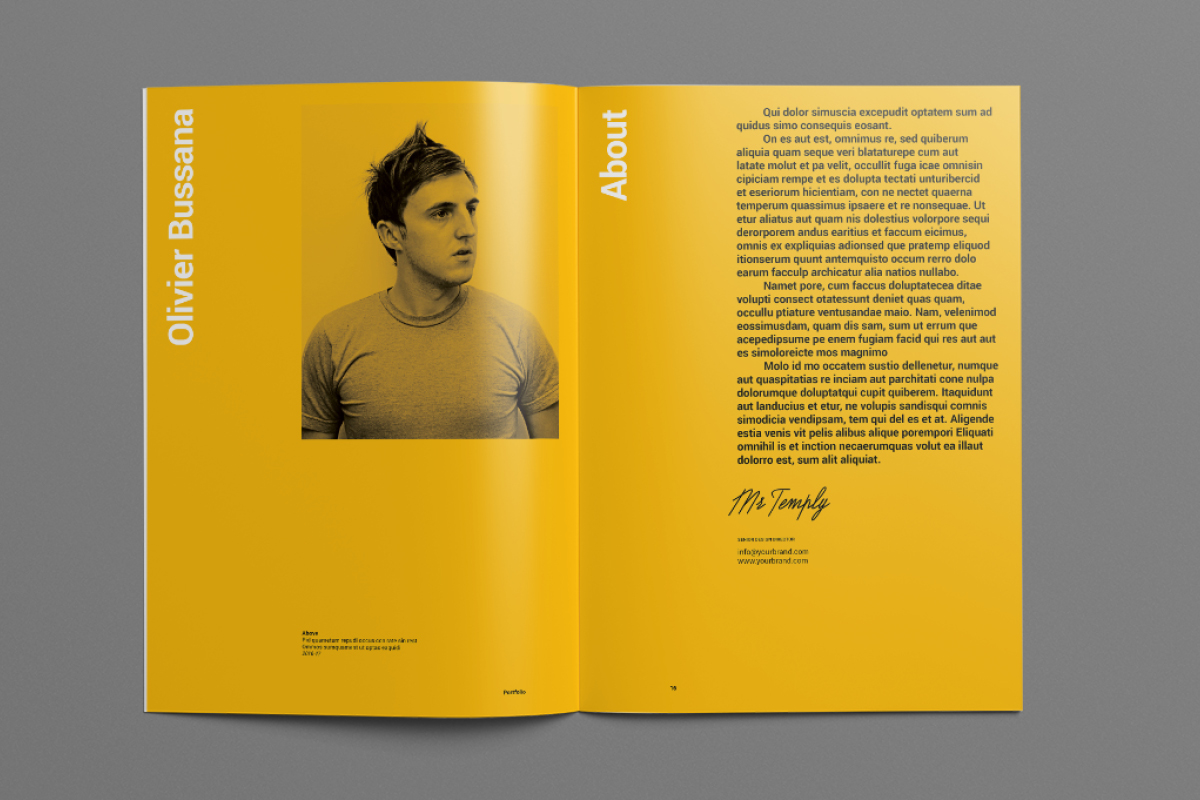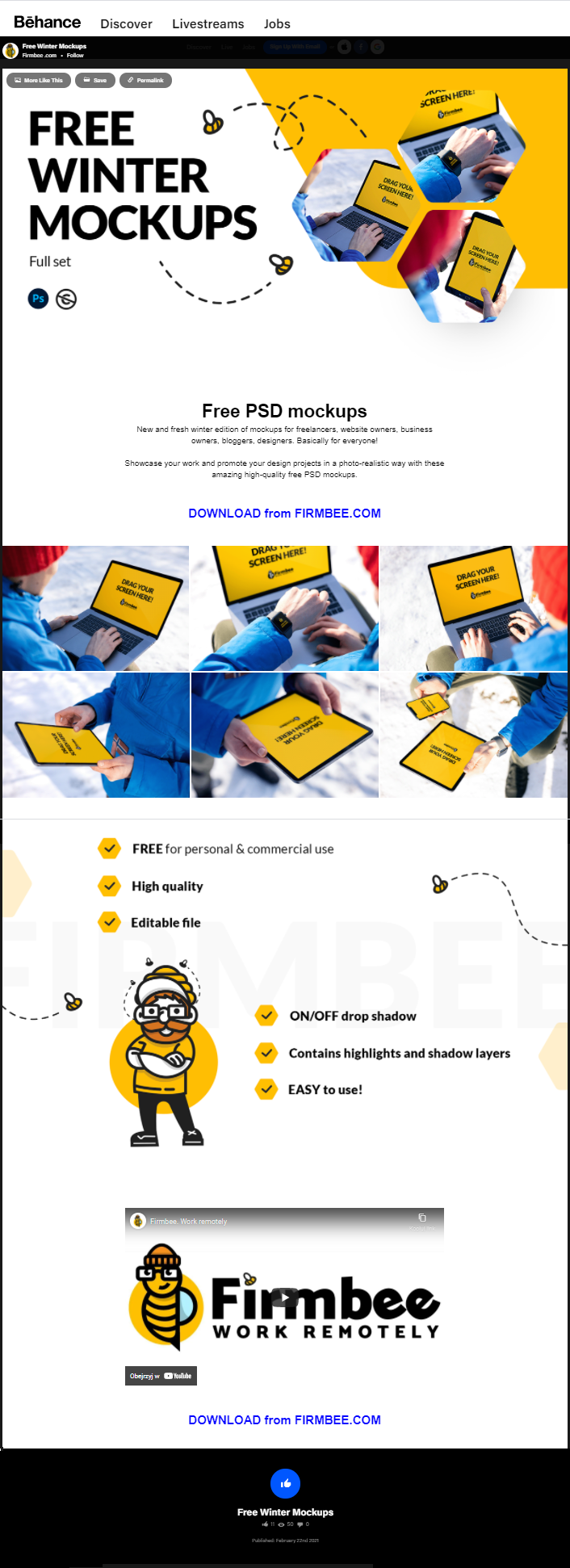Ready to showcase your creativity on Behance? Organizing your images effectively can make a world of difference. A well-structured portfolio not only highlights your skills but also captivates potential clients and collaborators. Whether you're a graphic designer, photographer, or artist, having an organized collection of your work invites viewers to explore and appreciate your unique style. Let’s dive into some tips to help you create a portfolio that stands out!
Understanding the Importance of Image Organization

When it comes to presenting your work on Behance, how you organize your images can significantly impact your portfolio's success. Here’s why image organization matters:
- First Impressions Count: Your portfolio is often the first thing potential clients see. An organized collection makes a strong impression, showing you are professional and meticulous.
- Easy Navigation: Clear categorization of your projects makes it easy for viewers to find what they’re looking for. Whether it’s branding, illustration, or photography, letting people navigate your work smoothly keeps them engaged.
- Storytelling: Each project has a story. By organizing your images, you can guide your audience through your thought process, from the initial concept to the final result. This creates a deeper connection with your viewers.
- Highlighting Skills: An organized portfolio allows you to showcase your skills effectively. By grouping similar works, you can demonstrate your expertise in different areas without overwhelming your audience.
Now, let’s break down some best practices for organizing your images:
1. Categorize Your Work
Start by creating categories based on your expertise. For example:
- Graphic Design
- Photography
- Illustration
- Web Design
Each category should reflect your primary skills and the type of projects you want to attract. This not only makes navigation easier for viewers but also aligns your portfolio with the types of clients you want to attract.
2. Use High-Quality Images
Your images are the stars of your portfolio, so ensure they are high-resolution and showcase your work in the best light. Poor-quality images can detract from even the most innovative designs. Consider using a consistent style of presentation for your images—this creates a cohesive look that enhances your overall portfolio.
3. Create Projects with Context
When uploading images, package them into detailed project presentations. Each project should include:
- A brief description of the project goals
- The process you followed, from concept to final product
- The tools or techniques you used
By adding context, you give your audience insight into your creative process and problem-solving abilities, making each project more relatable and impressive.
4. Regularly Update Your Portfolio
Finally, keep your portfolio fresh. Regularly add new projects and remove outdated ones that no longer represent your current skill level or style. This attentiveness keeps your work relevant and demonstrates your ongoing commitment to growth and improvement.
In summary, organizing your images on Behance is not just about aesthetics; it’s about presenting a narrative that reflects your skills and creativity. By following these best practices, you’ll create a stunning portfolio that captures your artistic voice and invites collaboration!
Also Read This: How to Change Username on Behance: Altering Your Profile Name for Better Branding
Choosing the Right Project Structure

When it comes to showcasing your work on Behance, the structure of your projects is incredibly important. A well-organized project not only makes it easier for potential clients or collaborators to navigate your portfolio, but it also highlights your thought process and creativity. Here are some tips for choosing the right project structure:
- Start with a Strong Overview: Your project should begin with a brief introduction. This is your chance to explain what the project is about, your role in it, and what the viewer can expect to see. Think of it as a mini elevator pitch.
- Group Related Works: If you have several images or pieces related to a single theme or project, group them together. This can help tell a cohesive story and provide context. For instance, if you’re displaying a branding project, include the logo, color palette, and other brand assets together.
- Use Sections Wisely: Breaking your project into sections can guide your viewer through the narrative. Use headings and subheadings to segment different stages of your work, such as “Research,” “Ideation,” and “Final Outcomes.”
- Include Process Shots: Many creatives underestimate the value of process shots. Including images showing your development process can engage viewers and help them understand the effort and thought you put into the work.
- Create a Clear Flow: Make sure there’s a logical progression from one image to the next. Use captions to give context when needed, which can help maintain interest and clarify complex pieces.
By structuring your projects thoughtfully, you're not just displaying images; you're telling a story that captivates and informs your audience. Remember, first impressions count, and a tidy, intentional structure can elevate your entire portfolio.
Also Read This: How to download Eyeem Downloader without watermark for free
Image Quality and Formats to Use

The visual quality of your images on Behance is paramount. After all, your work is primarily visual, and any shortcomings in image quality can detract from even the best projects. Here’s what you need to know about image quality and formats:
- High Resolution is Key: Always upload images in high resolution. You want your portfolio to reflect a standard that matches industry expectations. Aim for images that are at least 1800 pixels on the longest side to ensure clarity when viewed on various devices.
- Optimal Formats: JPEG and PNG are the most commonly used formats on Behance. JPEGs work well for photographs and detailed graphics due to their good compression ratios, while PNGs are great for images that have transparent backgrounds or text overlays because they maintain high quality without compression artifacts.
- Consider File Size: While high resolution is essential, also be mindful of file size. Large files can slow down loading times and may discourage viewers. Aim for a balance that maintains image quality while keeping file sizes manageable—typically around 1MB to 3MB per image.
- Color Profile: Always use RGB color profiles for your images, as this is the standard for web display. This ensures that your colors appear vibrant and true to life on screens.
- Avoid Over-Compression: If you are using JPEG or other compressed formats, be cautious. Over-compressing images can lead to visible artifacts, diminishing the impact of your work.
In summary, focusing on image quality and choosing the right formats can significantly enhance the viewing experience for your audience. Beautiful, crisp images will showcase your hard work more effectively than any amount of text ever could. So take the time to ensure that every image you upload is the best representation of your talent and creativity!
Also Read This: How to Make a Project Private on Behance: Controlling Who Can See Your Work
5. Utilizing Tags and Categories Effectively

When it comes to showcasing your work on Behance, effectively using tags and categories can elevate your portfolio from ordinary to exceptional. Think of tags as breadcrumbs that help viewers navigate through your body of work, while categories provide structure to your projects.
Why are tags important? Tags are like hashtags on social media—they help others discover your work when they search for specific topics. Here are some best practices for utilizing tags:
- Be Specific: Use specific keywords that accurately describe your project. Instead of just tagging “design,” consider “graphic design,” “branding,” or “illustration.”
- Think Like Your Audience: What terms would potential clients or collaborators use to find work like yours? Incorporate those terms into your tags.
- Mix General and Niche Tags: Combining broad tags with more niche-specific ones will help you reach a wider audience while still targeting your ideal viewers.
- Limit Your Tags: Avoid overwhelming viewers with too many tags. Aim for around 5 to 10 relevant tags that succinctly convey the essence of your work.
Categories to Consider: When setting your project’s category, think about the major disciplines your work falls under. Common categories on Behance include:
- Photography
- Graphic Design
- UI/UX Design
- Illustration
- Animation
- Web Design
Utilizing the right tags and categories not only helps potential clients find your work, but it also reflects your professionalism. Take the time to thoughtfully categorize and tag each project, and you’ll be rewarded with increased visibility and engagement.
Also Read This: How to Loop a Video on Behance: Keep Viewers Engaged with Seamless Video Playback
6. Creating Cohesive Visual Narratives
One of the most compelling aspects of a well-organized portfolio on Behance is the ability to tell a cohesive visual story. Your portfolio should not just be a collection of your works; it should reflect your unique style and the evolution of your creative journey. Here’s how you can create a captivating visual narrative.
Strong Project Presentation: Each project should stand alone yet contribute to the overarching narrative of your portfolio. Here are some tips:
- Use Consistent Visual Elements: Maintain a consistent color palette, typography, and style across your projects. This unity creates a seamless experience for the viewer.
- Curate Your Best Work: Quality trumps quantity. Select pieces that not only showcase your versatility but also complement each other well. Aim for a balanced mix of different styles while maintaining a cohesive theme.
- Tell a Story: Consider starting with a strong introduction that connects your projects. For each piece, include a narrative that discusses your inspiration, the creative process, and the challenges you faced.
Sequential Order: Arrange your projects in a way that reflects your growth or thematic exploration. For instance, if you’ve transitioned from branding to UI design, consider grouping those projects together to emphasize your versatile abilities.
Use Visual Flow: Think about visual hierarchy and flow. Consider how the images are arranged on the page to guide the viewer's eye naturally from one piece to the next. Position larger pieces strategically to draw in attention.
By focusing on creating cohesive visual narratives, you not only engage your viewers but also leave a lasting impression. Your portfolio becomes more than just a showcase; it transforms into an intriguing reflection of your creative identity, inviting potential clients and collaborators to embark on a journey with you. Make sure every project feels like a chapter in your unique story, and you’ll captivate your audience effortlessly!
Also Read This: How to Delete a Behance Page: Removing Your Portfolio or Creative Profile
7. Incorporating Descriptions and Context for Each Image
When it comes to showcasing your work on Behance, merely uploading images isn't enough. You want to tell a story, and that’s where descriptions and context come into play. Think of each image as a chapter in a book; without the narrative, viewers might miss the essence of your work.
Start by providing insights about your project. Consider including:
- Project Overview: Give a brief introduction to what the project is all about. What was the objective?
- Creative Process: Share details about the methods, inspirations, and tools you used. This could be anything from the software you worked with to the mood boards that influenced your design.
- Challenges Faced: Discuss any hurdles you overcame during the project. This adds depth and shows your problem-solving skills.
- Final Thoughts: Include your reflections after completing the project. What did you learn? What would you do differently next time?
Each image should have a concise description—aim for a few sentences that enhance the visual experience. For example, if you’ve designed a logo, explain the meaning behind the elements you chose. This not only keeps your audience engaged but also allows them to appreciate your thought process.
Also, consider the tone of your descriptions. A friendly, accessible tone can invite more interaction. Think about how you would explain your work in a conversation; this helps to keep your writing relatable and engaging.
Lastly, don’t forget to use keywords that can help in search visibility. Use terms that are relevant to your work, like the style of design or the medium you used, to ensure your project reaches the right audience.
Also Read This: How to Be Discovered on Behance with Effective Strategies for Increased Visibility
8. Leveraging Behance Features for Enhanced Presentation
Behance is more than just a platform for image sharing; it’s packed with features designed to enhance the presentation of your portfolio. Understanding and using these features effectively can set your portfolio apart from the rest.
Here are some top Behance features to consider:
- Project Tags: Use relevant tags for your projects. This not only helps others find your work but also keeps your portfolio organized. Think of tags that represent your skills or the type of projects you’re showcasing.
- Image Sequences: Instead of displaying individual images, consider creating image sequences. This allows viewers to see the progression of your work, providing a fuller picture of your process and outcomes.
- Video Content: If your project lends itself to video, don’t hesitate to include short clips. This can be especially effective for branding projects or animations, as it brings your work to life in a dynamic way.
- Background Music: For projects focusing on multimedia, adding a suitable soundtrack can enhance the viewer's experience. Just remember to choose music that complements your visuals and doesn't overpower them.
Another valuable feature is the ability to group similar projects into panels or collections. This not only organizes your work but allows for a streamlined presentation, making it easier for potential clients or collaborators to navigate through your portfolio.
Finally, always keep an eye on your portfolio analytics provided by Behance. Understanding which projects get the most views and interactions can guide your future work and help you refine your portfolio strategy.
By leveraging these features, you can create a more immersive experience for your viewers and significantly boost your portfolio's impact. Remember, it’s all about not just showing your work, but also making it resonate with your audience. Happy showcasing!
Also Read This: How to Add Social Media Icons to Behance: Linking Your Portfolio to Your Social Media Accounts
9. Regularly Updating and Maintaining Your Portfolio
When it comes to showcasing your creativity on Behance, keeping your portfolio fresh and up-to-date is absolutely crucial. Think of your portfolio as a living, breathing entity that evolves with your skills and tastes. If you want to stand out in a sea of talented artists and designers, you need to regularly refresh your displays. Here are some best practices for maintaining your portfolio:
- Set a Schedule: Dedicate time each month or quarter to review your portfolio. This ensures you're consistently curating your work and determining what still represents you best.
- Highlight Recent Projects: As you complete new projects, consider replacing older work that may no longer reflect your current skill level or style. It's essential to show your evolution as a creative professional.
- Stay Relevant: Industries change rapidly, and so do design trends. Keep an eye on what’s trending in your field and incorporate new styles, techniques, or ideas that resonate with you.
- Solicit Feedback: Don’t be afraid to ask friends, colleagues, or mentors for their thoughts on your portfolio. A fresh set of eyes can provide invaluable insights on what to keep, update, or enhance.
- Be Selective: Quality over quantity is the name of the game. Retain only your best work that really captures your skills. This not only keeps your portfolio clean but also maximizes impact.
- Document Your Growth: Sometimes it's worth showing how you’ve improved over time. Consider creating side-by-side comparisons of older works with your latest creations to highlight your skills’ evolution.
Regularly updating your portfolio doesn’t have to feel like a chore. You can approach it like a new project where you refine, innovate, and express your artistic journey. When your portfolio reflects your most recent and relevant work, it engages potential clients and collaborators, making a lasting impression that could lead to exciting opportunities.
10. Conclusion and Call to Action
Creating a stunning portfolio on Behance is not just about showcasing your work; it's about telling your story as a creative. By implementing these best practices—like regularly updating your portfolio and organizing your images effectively—you'll be well on your way to capturing the attention of your audience.
Now, it’s your turn! Take a moment to reflect on your current Behance portfolio. Ask yourself:
- When was the last time you updated it?
- Is your work organized in a way that makes it easy for viewers to navigate?
- Are you showcasing your strongest pieces first?
If your answers are less than satisfactory, it’s time to roll up your sleeves and get to work! Start by implementing the tips outlined in this blog. Remember, a well-organized and regularly updated portfolio not only showcases your skills but also demonstrates your dedication to your craft.
Feel free to share your thoughts or any additional tips in the comments below! And if you found this post helpful, take a quick moment to share it with your fellow creatives. Together, let’s elevate the art community on Behance!
Ready to transform your portfolio? Start today!
 admin
admin








